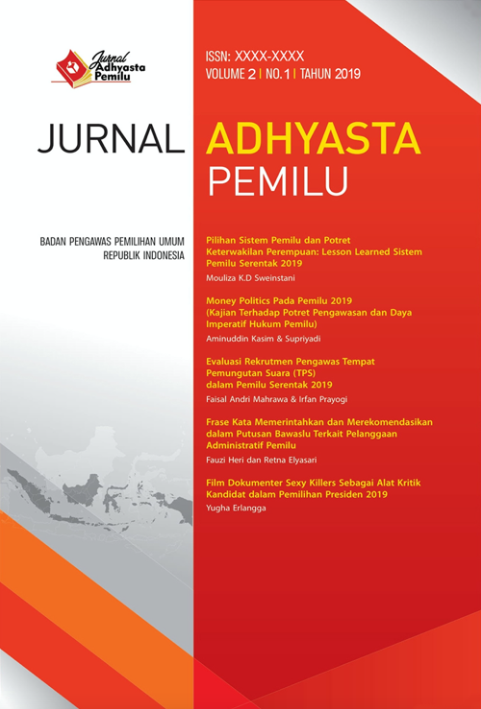Pilihan Sistem Pemilu Dan Potret Keterwakilan Perempuan
Lesson Learned Sistem Pemilu Serentak 2019
DOI:
https://doi.org/10.55108/jap.v2i1.33Kata Kunci:
affirmation policy, women’s representation, election systemAbstrak
As a mechanism that turns voter preference into seats, the electoral system may have impact on women’s representation. Using qualitative methods through documentary study and analysis based on national vote recapitulation data, it is known that the simultaneous electoral system in Indonesia in 2019 provides a separate dilemma for women’s representation. Based on national recapitulation data, it is known that the potential of women elected in 2019 rose to 20.52 percent. However, this increase cannot be classified as a significant increase because elected women are still dominated by those from elite kinship. In addition, several elements of the electoral system such as the time of implementation, the district magnitude, the used of Pure Sainte Lague Formula and the stagnation of the affirmation policy make women have to work harder in the electoral districts to get as many votes as possible according to the laws of the Sainte Lague Pure formula. Therefore, this study suggests a commitment between political elements to be able to create a female- friendly electoral system so that the meaningful and substantive women representation can be achieved. In doing so, I recommend to consider the closed-PR List System and a voluntary gender quota within the party as the next electoral engineering.
Unduhan
Unduhan
Diterbitkan
Cara Mengutip
Terbitan
Bagian
Lisensi
Hak Cipta (c) 2019 Mouliza K.D Sweinstani

Artikel ini berlisensi Creative Commons Attribution 4.0 International License.



